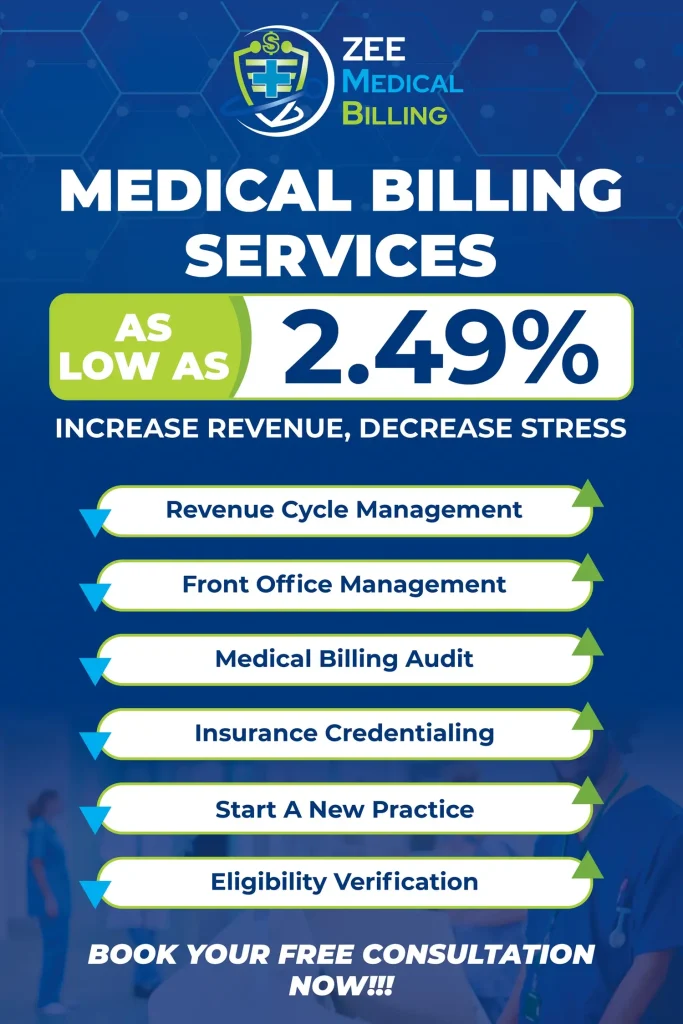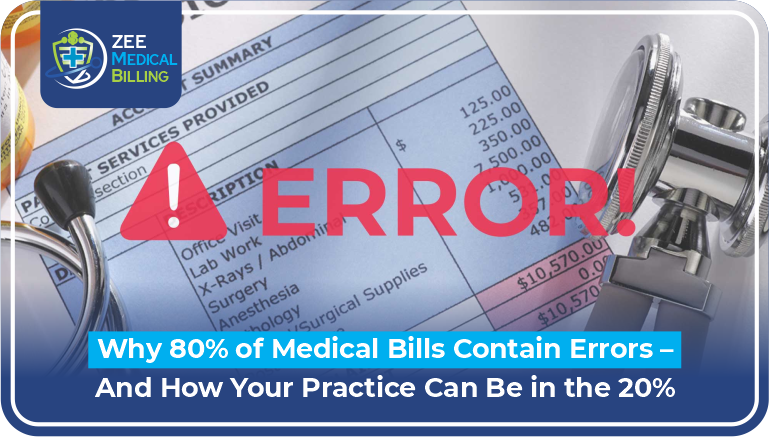A superbill is a detailed document used in medical billing. It lists the services given to a patient during a healthcare visit. It serves as a receipt for the patient and a claims document for insurance reimbursement. A superbill is different from a regular invoice. It has all the information a health insurance provider needs to process a claim correctly.
A superbill is a communication bridge between the healthcare provider, the patient, and the insurance company. It is essential for out-of-network providers or patients seeking reimbursement directly from their insurers.
What Information Does a Superbill Contain?
A standard superbill typically includes:
- Patient Information: Name, date of birth, insurance details.
- Provider Information: Practice name, address, NPI (National Provider Identifier), tax ID.
- Date of Service: The day the treatment occurred.
- Procedure Codes (CPT): Identify the services or procedures performed.
- Diagnosis Codes (ICD-10): Represent the medical diagnosis.
- Fees for Each Service: Listed charges associated with each procedure.
- Provider Signature: Sometimes included to verify authenticity.
This level of detail ensures that insurance companies can assess claims quickly and accurately.
Also Read: How AI Is Transforming Medical Billing and Coding?
Why Are Superbills Important?
Superbills are crucial for several reasons:
- Out-of-Network Reimbursement: Patients visiting out-of-network providers need superbills to claim reimbursement.
- Transparent Billing: Helps patients understand what services were provided and what they are being billed for.
- Efficient Insurance Claims: Insurance companies use superbills to determine how much to reimburse the patient.
- Record-Keeping: Acts as a detailed financial and medical record for both provider and patient.
In short, superbills streamline the reimbursement process and help maintain transparent billing practices.
How Do Superbills Work?
The process of using a superbill typically follows these steps:
- Service Delivery: A patient receives healthcare services.
- Superbill Generation: The provider creates a superbill with all relevant details.
- Patient Submission: The patient submits the superbill to their insurance provider.
- Insurance Processing: The insurer reviews the document and processes reimbursement.
- Reimbursement: Funds are sent to the patient (or sometimes directly to the provider).
It’s important to note that no one guarantees insurance reimbursement. The extent of reimbursement depends on the patient’s insurance plan and coverage.
Who Uses a Superbill?
- Healthcare Providers: Doctors, therapists, chiropractors, and other professionals generate superbills.
- Patients: Especially those seeing out-of-network providers.
- Insurance Companies: Use the superbill to determine eligibility and reimbursement.
Superbill vs. Invoice: Key Differences
| Feature | Superbill | Invoice |
| Purpose | Claim reimbursement from insurance | Request payment from patient |
| Includes Diagnosis Codes | Yes | No |
| Sent To | Insurance provider (via patient) | Directly to the patient |
| Contains CPT/ICD Codes | Yes | Not necessarily |
| Use Case | Insurance reimbursement | Patient billing |
Understanding the difference is key for both providers and patients.
Standard CPT and ICD Codes on Superbills
Healthcare professionals use industry-standard codes on superbills:
- CPT Codes: Represent procedures like an office visit (e.g., 99213 for a routine checkup).
- ICD-10 Codes: Represent conditions like hypertension (e.g., I10).
Insurers require these codes to validate and process claims. Accurate coding reduces delays and denials.
Best Practices for Creating Superbills
To ensure smooth reimbursement, providers should follow these guidelines:
- Use updated CPT and ICD-10 codes
- Double-check patient and provider information
- List all procedures clearly with associated costs
- Sign and date the superbill when necessary
- Educate patients on how to use and submit the document
Using templates or billing software can simplify the process.
Also Read: Importance of Accurate Patient Data in Medical Billing
Are Superbills Only for Insurance?
While primarily used for insurance reimbursement, superbills also serve other purposes:
- Tax Documentation: Can be used as proof of medical expenses
- Personal Records: Helps patients keep track of their healthcare history
- Legal Use: May be used in legal claims involving medical treatment
The Role of Superbills in Telehealth
Telehealth providers also issue superbills for virtual consultations. The process is the same, but may include extra steps such as:
- Verifying eligibility before virtual sessions
- Ensuring accurate coding for telehealth-specific CPT codes (e.g., 99421–99423)
FAQs
1. What is a superbill in medical billing?
A superbill is a detailed document made by a healthcare provider. It lists the services provided, the diagnosis, and the procedure codes. It helps patients claim insurance reimbursement, especially when using out-of-network services.
2. How do I use a superbill for insurance reimbursement?
You submit the superbill to your insurance company, usually through their member portal or via mail. The insurance provider then processes the claim based on your coverage and reimburses you accordingly.
3. What’s the difference between a superbill and a regular bill?
A regular bill is a request for payment from the provider to the patient. A superbill, however, is a document patients use to seek reimbursement from their insurance provider. It includes codes and data not typically found on a regular bill.
4. Do all insurance companies accept superbills?
Most private insurance companies do, particularly for out-of-network claims. However, acceptance can vary, so it’s best to check with your provider beforehand.
5. Can I use a superbill if I have Medicare or Medicaid?
Providers typically use superbills for private insurance claims. Medicare and Medicaid have their direct billing processes, so using a superbill may not apply in those cases.
Conclusion
A superbill is more than a receipt. An important document for patients and providers dealing with insurance payments exists. Knowing its structure and purpose helps patients make the most of their health benefits. It also helps providers stay clear and professional.
At Zee Medical Billing, we aim to simplify medical billing information and empower users with accurate, accessible content. We do not offer coding services, but we strive to explain complex healthcare billing terms in a user-friendly way.
Knowing about superbills helps patients make smart choices. It also helps providers support them at every step.
Need Expert Medical Billing Services?
Zee Medical Billing provides professional billing solutions tailored to healthcare providers across the United States. In addition to offering top-tier support from our main office, we proudly serve clients in Illinois, Indiana, California, Kentucky, New York, Washington, Georgia, Alabama, South Carolina, Texas, Pennsylvania, Ohio, New Hampshire, Nevada, Massachusetts, Hawaii, Arizona, and Colorado! Whether you’re looking to streamline your revenue cycle or improve claims accuracy, you can reach out to us to learn more about how we can support your practice.









